Venous Insufficiency
A Common Cause of Feet Swelling
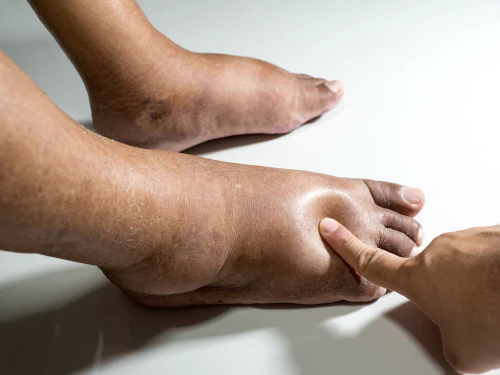
What Causes Leg and Feet Swelling?
The medical term for puffy, swollen feet and legs is called “Pedal Edema”.
- “Pedal” means feet.
- “Edema” means swelling from water retention.
There are many reasons that cause leg and feet swelling, including:
- Heart and lung problems (i.e. Congestive Heart Failure)
- Blood Clots in the leg veins
- Obstructive Sleep Apnea
- Kidney Problems
- Liver Problems
- Anemia (low red blood cells)
- Thyroid Problems
- One of the most common causes is “Venous Insufficiency,” which will be explained below.
Normal Blood Flow:
First, let’s understand normal blood flow:
- Arteries carry blood away from our heart to our organs.
- Veins return the blood back to our heart.
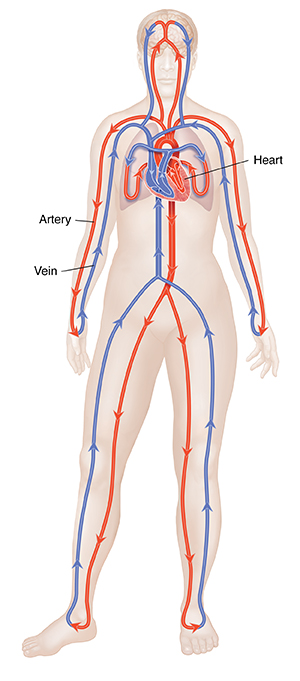
When blood flow back through the veins, there are one-way valves that keep the blood flowing in one direction:
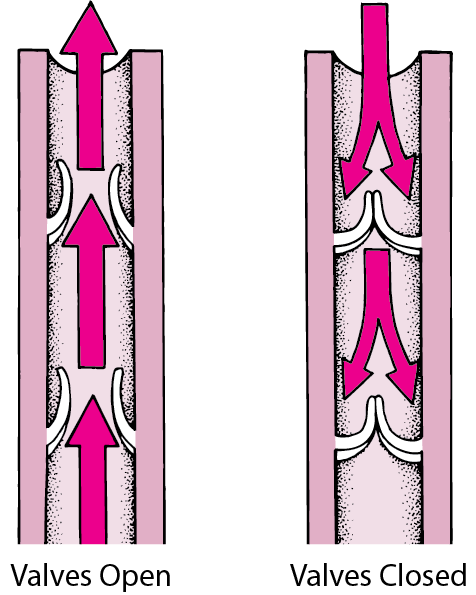
What is Venous Insufficiency?
You may have also heard the term “leaky veins.”
In some people, the veins and valves in the legs become damaged over time. The blood no longer flows easily back to the heart in one direction.
In addition, gravity is pushing down against the blood trying to flow upwards in the leg veins.
The pressure builds up in the leg veins. Varicose veins can start. The veins become “leaky,” and the fluid from the blood leaks out into the surrounding skin and tissue. It gets trapped in the skin tissue like water in a sponge.
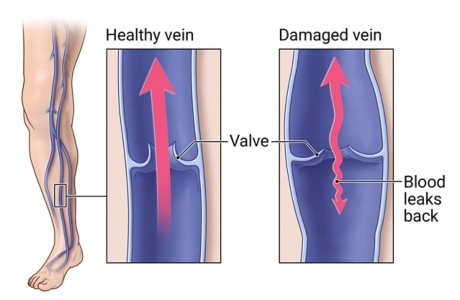
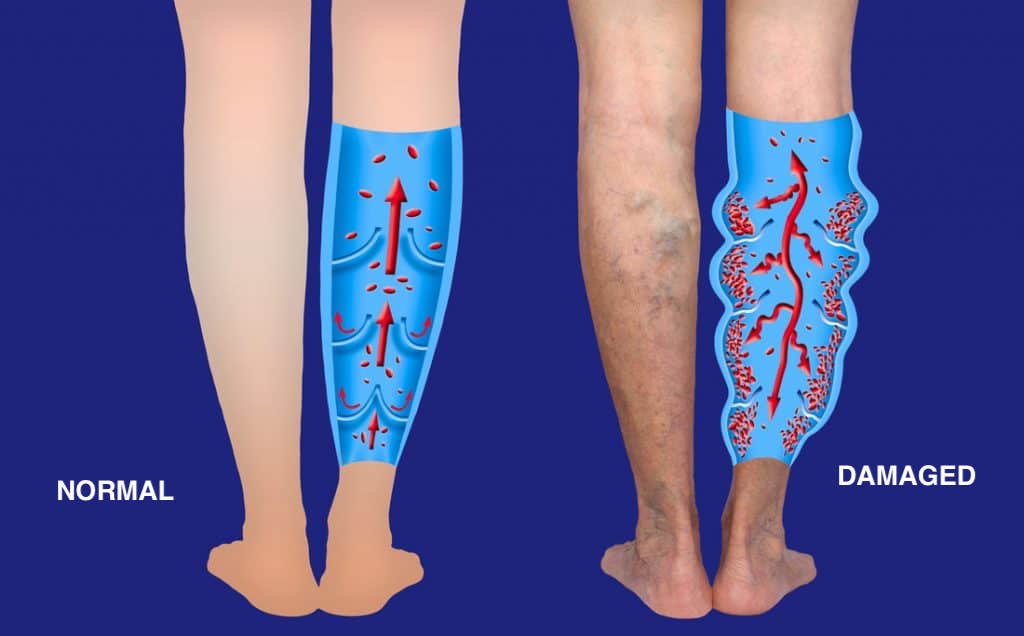
Why can it Cause Rashes and Ulcers?
Some people start to get rashes, blisters, and ulcers.
This is because the prolonged skin swelling starts to irritate and damage the skin.
Think of it this way:
- When the skin is very swollen and puffy, that causes more distance for the blood flow and nutrients to reach the surface of the skin.
- If the skin is not getting enough blood flow and nutrients, the skin gets irritated and can even die in those spots.
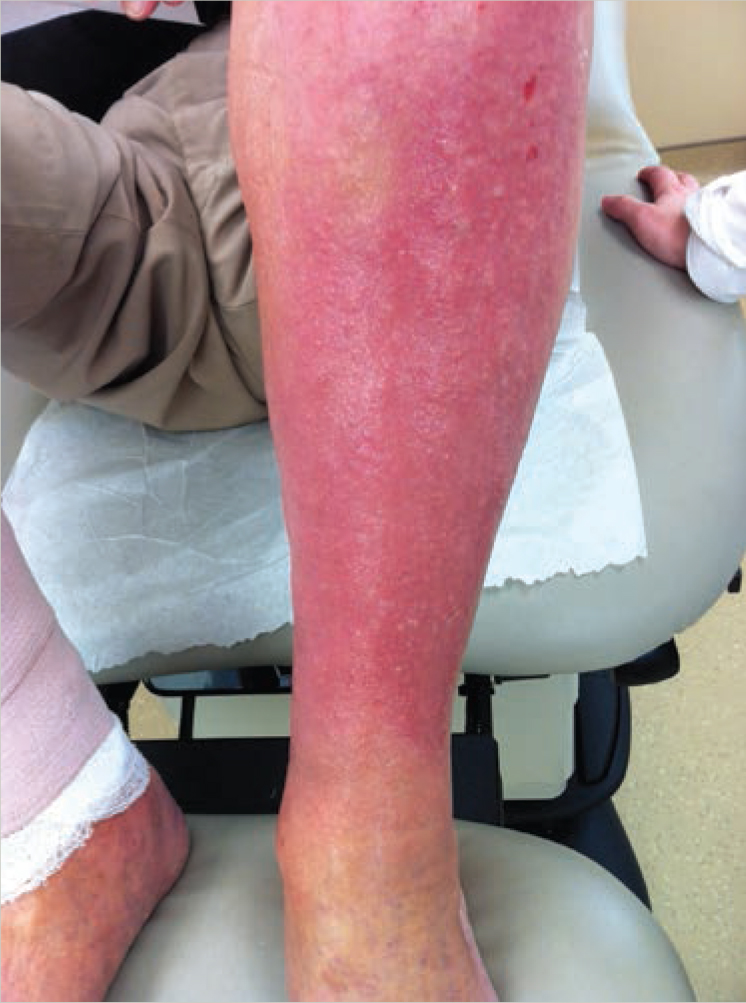
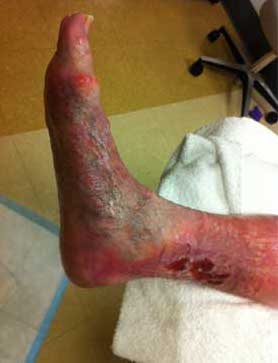
Signs and Symptoms of Venous Insufficiency:
- Swelling and Puffiness
- of the feet, ankles, and/or lower legs
- usually affects BOTH legs
- Heavy feeling legs
- Aching, Cramping, or Pain
- Itching skin or Rashes (as shown above)
- Varicose Veins
What Causes or Makes it Worse?
- Lack of Exercise and Activity
- When you are active and walking, your leg muscles help pump the veins and help blood flow return to the heart better.
- Obesity or Being Overweight
- Hot Weather
- Very common to see people with this leg swelling during the hot summer months.
- Eating a lot of salty or sugary foods
- Salt and sugar cause us to retain water.
- Certain Medications
- Your doctor or pharmacist can review your medications to ensure you are not on any that may be making the swelling worse.
Treatment and Prevention:
-
Exercise: Doing physical activities like running, swimming, or riding a bike can help our blood flow better. It’s like giving our veins a good workout!
-
Elevate Your Legs: Sometimes, if we raise our legs up above our hearts, it can help the blood flow back to our hearts. We can put our legs on a pillow or cushion while we’re sitting or lying down.
-
Compression Stockings: These are special tight socks that put pressure on our legs. They can help improve the blood flow and reduce swelling. This usually requires a prescription from a doctor to ensure you get the right type for your situation.
-
Avoid Sitting or Standing for Too Long: If we sit or stand for a long time, it’s good to take breaks and move around. It keeps the blood flowing nicely.
-
Weight Loss: Losing weight helps in many different ways.
Compression Stockings:
As mentioned above, compression stockings are one of the most helpful tools for improving the swelling and keeping it away.
But before you can wear compression stockings, you usually need to get a special ultrasound to check the pressures and circulation of the artery blood flow to your legs in the first place.
This special ultrasound is called an “ABI” ultrasound.
Remember that:
- Arteries carry blood away from our heart to our organs.
- Veins return the blood back to our heart.

If you have a narrowing or blockage in your arteries carrying blood supply to your legs, you don’t want to put pressure on the legs and cut off the circulation to your legs!
Once your ABI ultrasound is done and confirmed normal, you are then safe to wear compression stockings.
A Great Summary Video:
When Should You See a Doctor?
At the very start of this article, it was explained that feet and leg swelling can be caused by many different things. So, you usually need to see a doctor at the start to determine the cause of the leg swelling.
You should definitely see a doctor if you have any of the following:
- Shortness of breath or trouble breathing.
- Trouble breathing when you lay flat.
- Chest Pain.
- If the leg swelling is just one leg (not both legs)
- Signs of infection (severe redness or pus)
- Severe Pain
- Anything else that seems worrisome.
